Attention and Nature Journaling
A Form of Care, Respect and Love
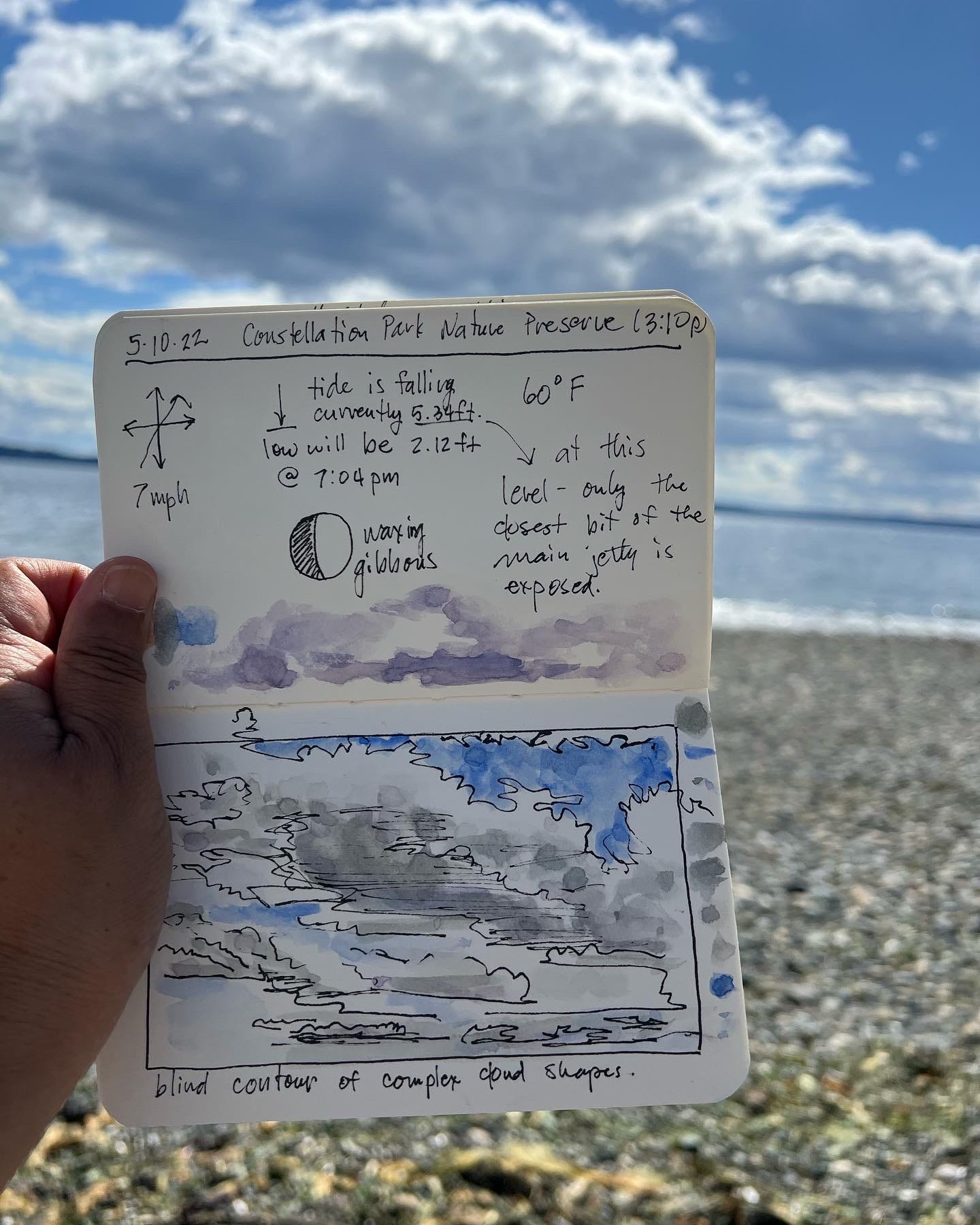
I recently learned about a book called, How to Do Nothing: Resisting the Attention Economy, by Jenny O’Dell. I learned about this book because I subscribe to a podcast called Finding Our Way by Prentis Hemphill and Jenny was recently a guest. In the conversation with Prentis, Jenny shares how she learned how to pay attention to mosses.1 I haven’t read the book yet but this conversation got me thinking a lot about attention - how it is a resource, the ways my nature journaling practice is precisely an exercise in “spending” my attention in ways that feed me - body, mind, and spirit, and that how and to whom I give my attention is an act of caring, respect, and love.
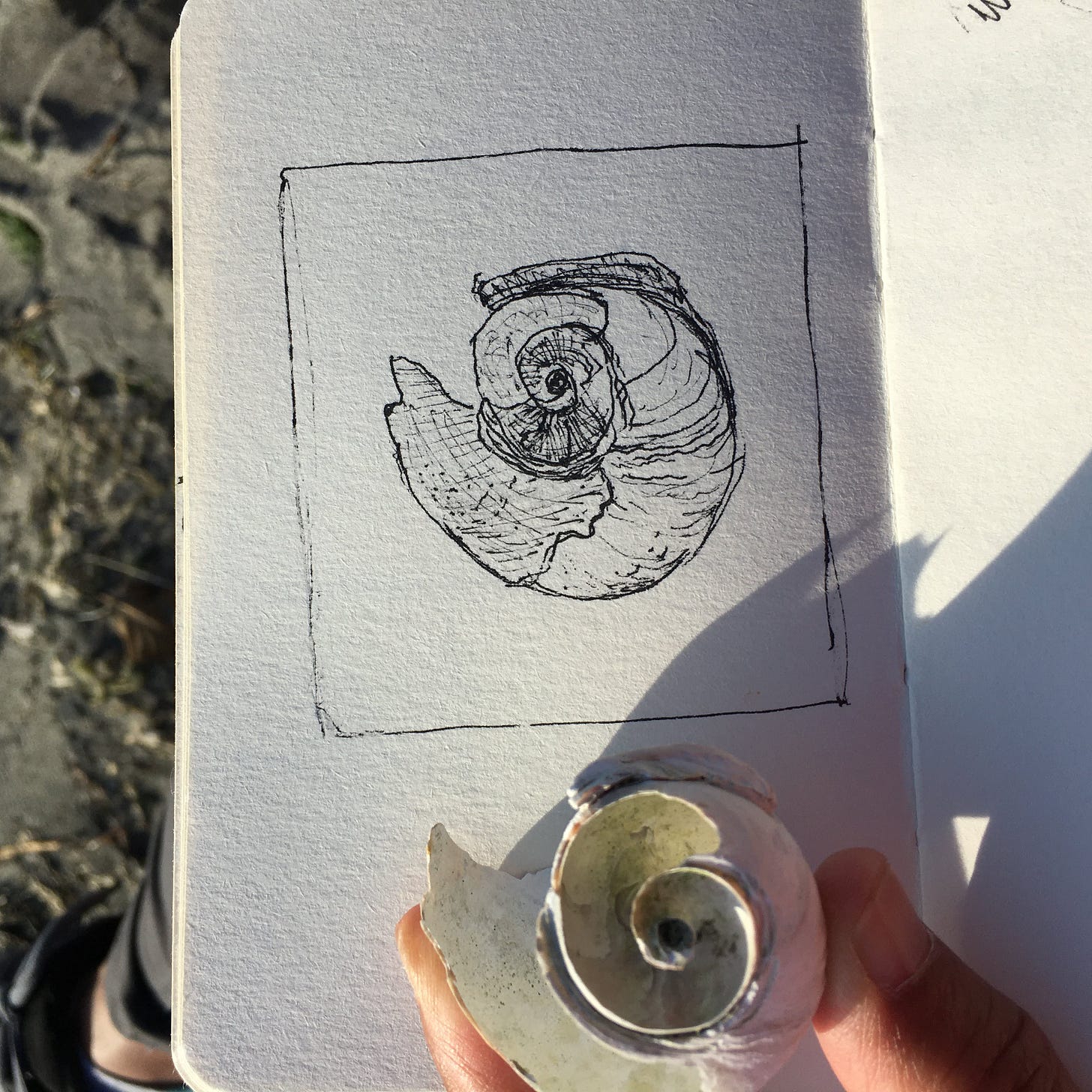
As I mentioned in a previous post,
I prefer to do my nature journaling outdoors. I do this because when I am out walking, I am already accessing several benefits - fresh air, sunlight, pleasing sounds, movement. Then, when I stop to draw or paint or make notes about something I’m observing, I access an additional benefit - a period of time when my mind is free from worrying.
This is a very important benefit for me because I live with Generalized Anxiety Disorder. This means that excessive worry is a default setting for my brain. Anxious thoughts don’t simply reside in my brain but cause physiological changes in my body. Muscle tension, migraines, aches in my joints, fatigue and insomnia are all chronic problems due, in large part, to my anxiety. If these aren’t addressed, my creativity plummets and my ability to cope with life stress diminishes. But, when I am out walking and drawing, my attention shifts and for a time my brain stops generating anxious thoughts altogether. I admit that I can spend several blissful hours walking and sketching but even when I’ve managed only a 20 minute walk and sketched for 5 or 10 minutes, over time, I have felt relief. Nature walking and nature journaling aren’t the only tools I have for coping with my anxiety but they are the easiest to access.
My favorite nature drawing activities that help me practice attention are blind contour and gesture drawing. For those who are coming across blind contour technique for the first time, a blind contour is a drawing done without ever looking down at your paper! What? How does one draw without looking? I do this by imagining that my eyes and hand are linked like a pantograph drawing tool. I move my eyes along the edges of my subject and my hand tries it’s best to move exactly as my eyes move - as if they are physically connected.
Gesture drawing is a way of drawing a subject that is moving! I love this for drawing clouds and animals. In a gesture drawing, I pretend to take a mental “snap shot” of an animal’s posture while my subject is relatively still. Then my hand moves quickly to capture the quality of that posture before it moves again. When my subject moves into a different posture, I take another “snap shot” and make another quick shape or line. I can return to partly finished drawings if my subject moves back into that same posture. I repeat until my page is full.
These strategies don’t result in an exact drawing. In fact, the results are often very humorous but I don’t mind. I don’t mind because the goal of both blind contour and gesture drawing is not to achieve an accurate illustration, the goal is to spend time and attention on looking and learning. I can do more blind contour drawings of the same subject and each time, I become more familiar with my subject. I have noticed that doing this one practice over time correlates with an improvement in my drawing. I also don’t mind that my drawings look wonky because I know that my nature journal is first and foremost mine. By this I mean, I am not drawing for a science manual or so that another naturalist can pick it up and learn an unfamiliar species from them. I am drawing because the act of drawing focuses my attention on what I am observing and this kind of low stakes drawing is enjoyable.
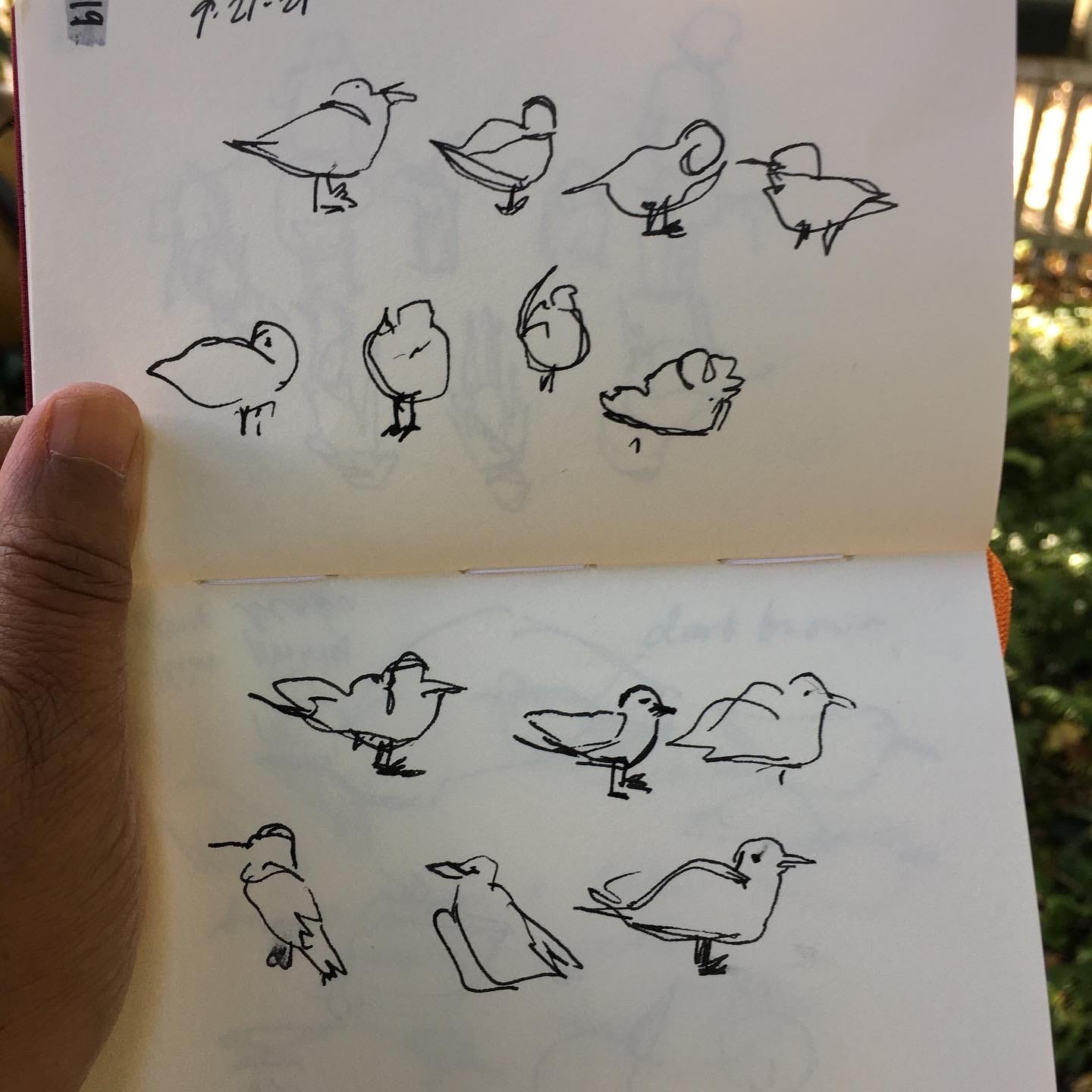
So far, I’ve described how nature journaling benefits my mind and body - my mind is freed from worrying and my body is accessing movement, sunlight, fresh air and even sounds - like the sound of moving water and birds signing. My need to nourish my spirit is also achieved through my nature journaling.
Regular, almost daily, nature walking and keeping a nature journal brings me in contact with beauty, mystery, awe, curiosity, and delight - all of these emotions nurture my spirit. Walking slowly along the beach at low tide one day, I spotted what looked like mucus2 on a blade of kelp. Using the zoom on my phone camera, I discovered that what looked amorphous at a distance was, close up, actually a lovely regular swirl and within that swirl were an even finer texture made of dots. Later I learned that this was an egg mass of a marine animal - most likely a nudibranch or marine slug3. Finds like the egg mass (in the photo below) spark a visceral and emodied sense of connection to my more-than-human relatives.
In this day of 24/7 news, entertainment and information on demand, almost limitless choice- for those of us in highly “developed” countries - our attention is itself a resource/product. So, how and where I “spend” my attention is something I try to do with intention. I know that in times when someone has given me their kind attention, those are the times I feel most respected and even loved. So I practice attention in nature too as a form of reciprocal care and love. The work of birds, bees, spiders, sea slugs, salmon, trees, sand fleas, algae, flowers…and many other living and non-living things result in food, medicine, energy, inspiration, comfort, solace and much more…which all benefit us. I believe that the very minimum we can do in return is to pay them some kind attention.
Thanks again for reading A Wild Braid Nature Journal!
Sincerely,
Alma
A Wild Braid Nature Journal is part of A Wild Braid project in which my mission is to show ways that nature walking, nature journaling, and creativity can be easily accessible, especially for those who think they have no time or have no artistic skill. To learn more, please visit www.awildbraid.com.
To support this project you can do one or more of the following:
Tell me what you wonder: about nature, about nature journaling. I can’t guarantee that I will have an answer but your questions might spark a fruitful inquiry and I’ll be happy to share what I discover or already know.
Subscribe to this newsletter. It’s free!
Share A Wild Braid Nature Journal with someone
Follow me on Instagram @awildbraid
Leave a donation
Jenny’s interest in mosses is ignited after reading Braiding Sweetgrass by Robin Wall Kimmerer. I have read this book and highly recommend it!
My partner and I like to call this “interesting snot.”
My best guess is that the Thick Horned Nudibranch (formerly called the Opalescent Nudibranch) laid this egg mass. For more information you can visit this website: https://www.centralcoastbiodiversity.org/opalescent-nudibranch-bull-hermissenda-crassicornis.html

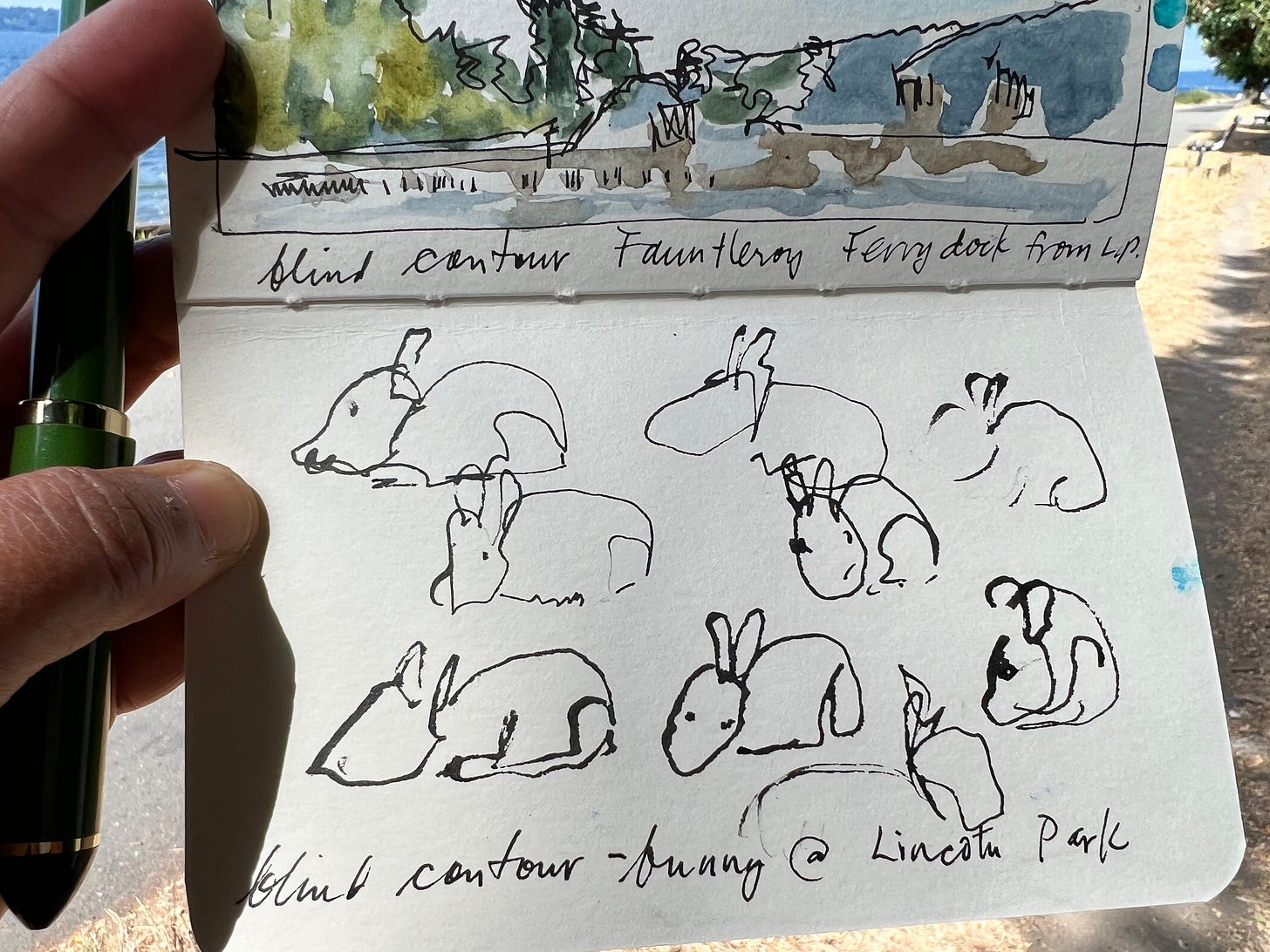
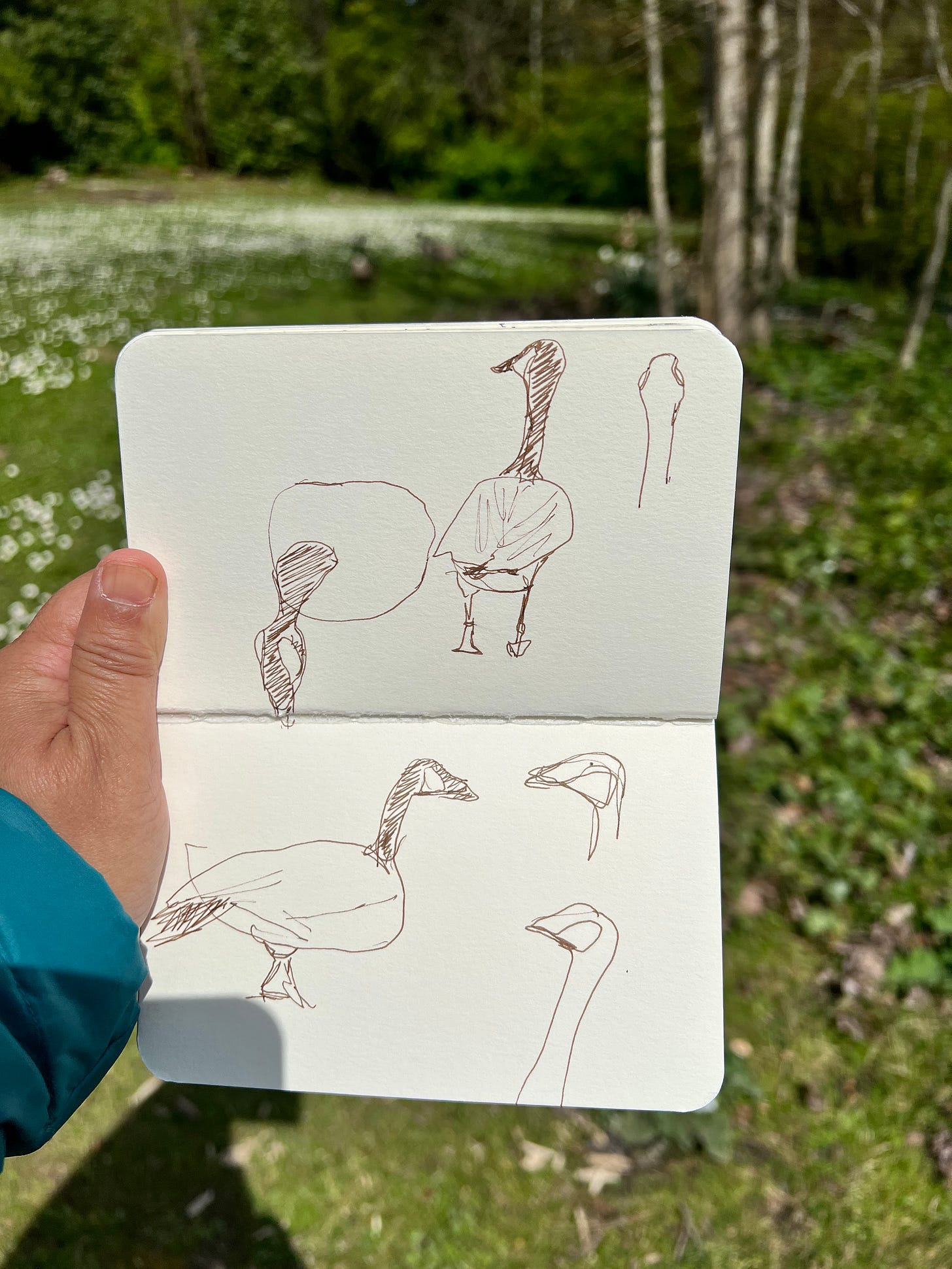
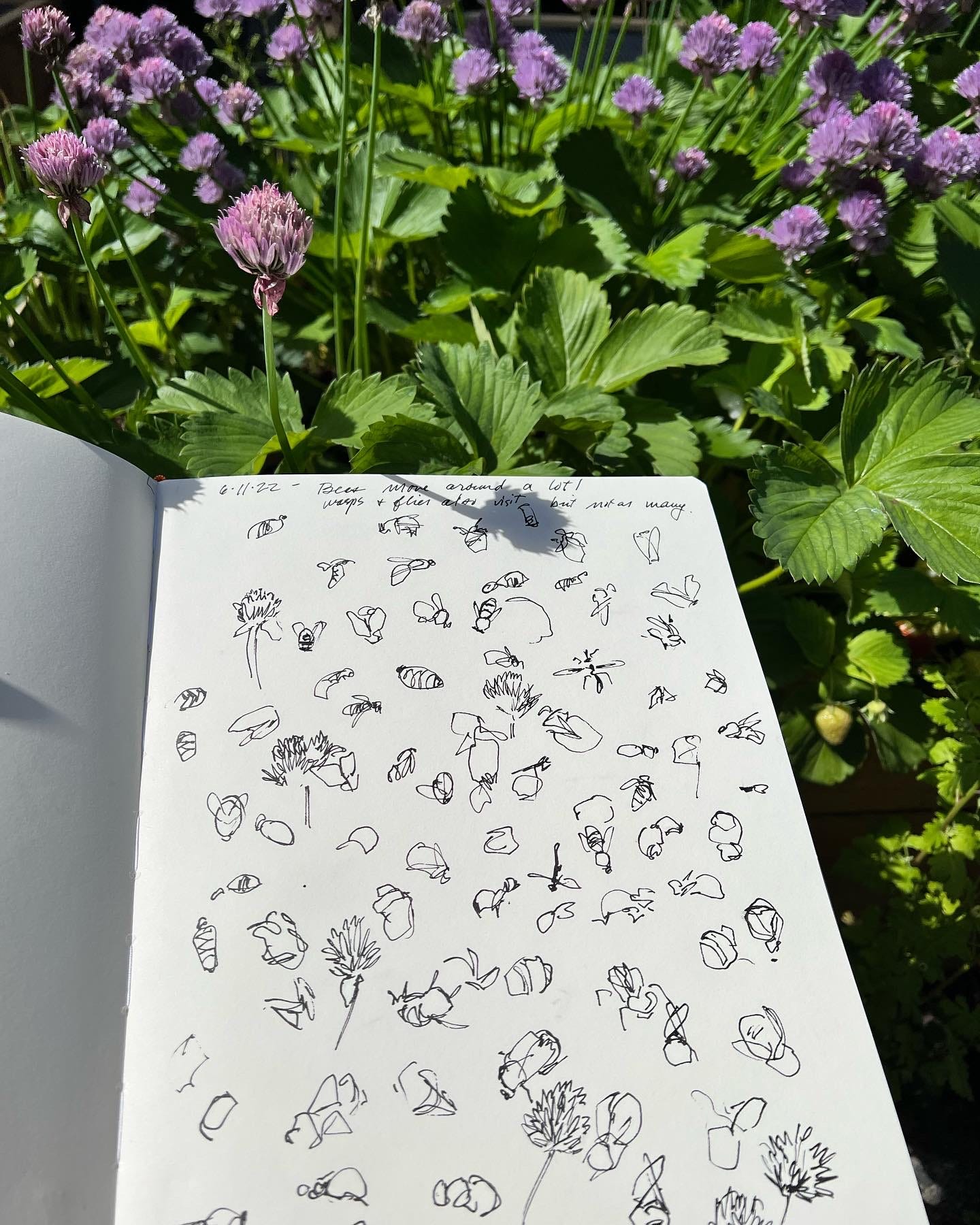
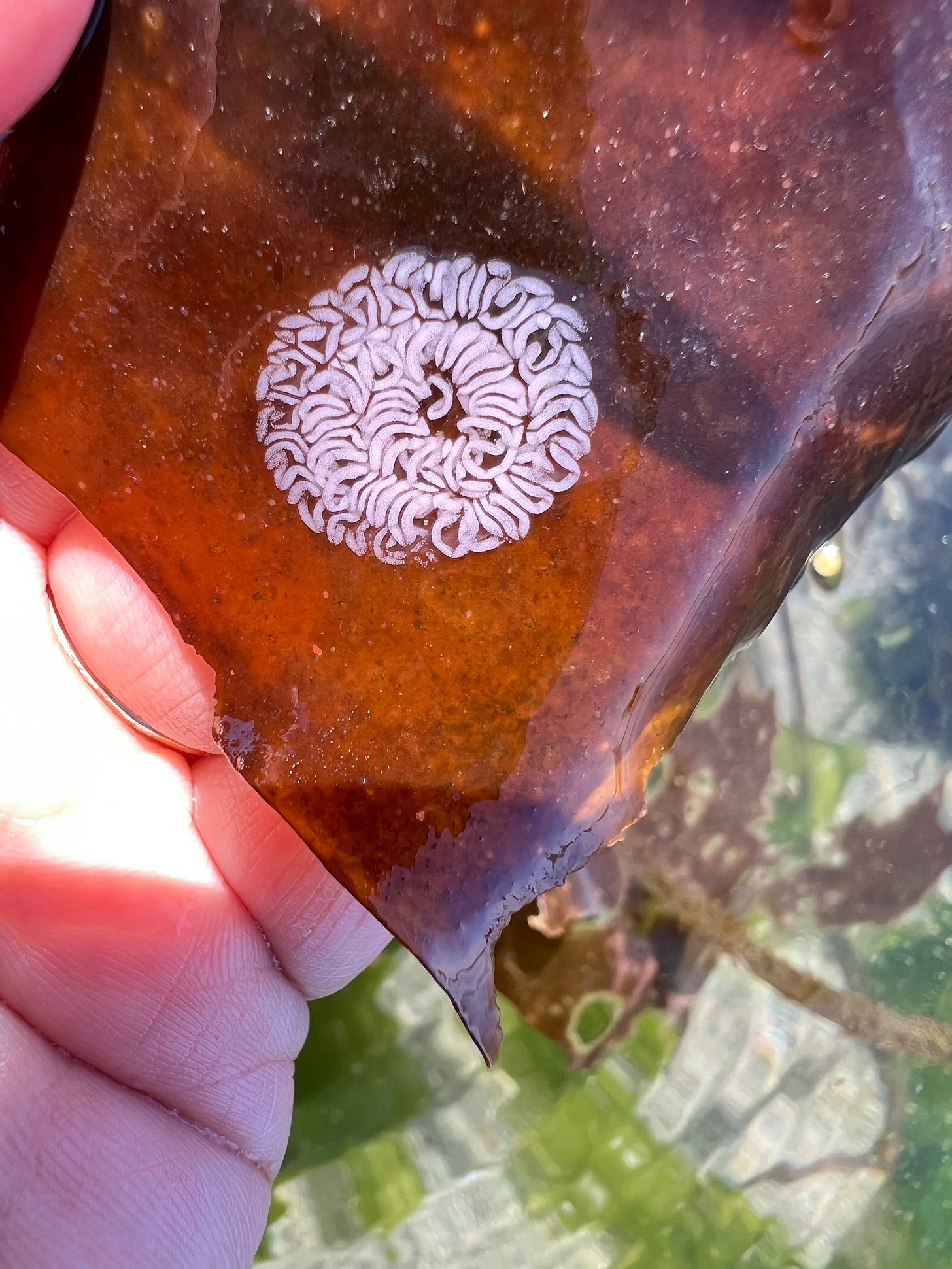
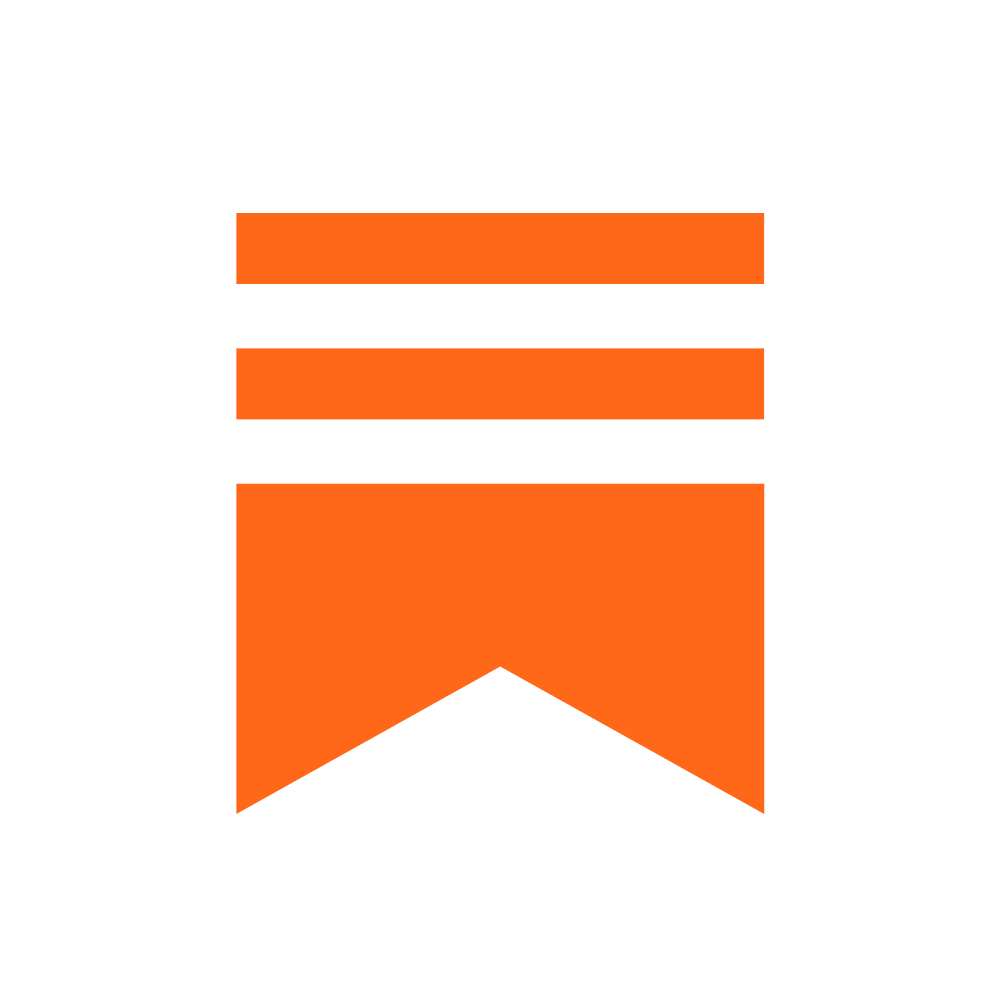
Nature journaling for me is a lot of times is learning about the plants or area that I'm observing. The act of sketching and painting with color helps me to remember the facts!
Thank you, Alma, for sharing your way of coping with anxiety by nature journaling and enjoying walks in the outdoors. Noticing the details, slowing down, observing, pondering, blind contour sketching -- these are all wonderful ways of redirecting our brain to focus on something else! I loved the swirl egg mass you found! I am so inspired to get out looking for nudibranchs as you have found so many unique ones - I find them quite intriguing! Looking forward to reading about more of your outings and thoughts!